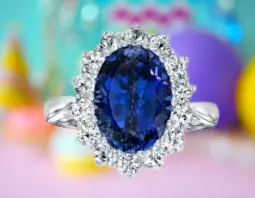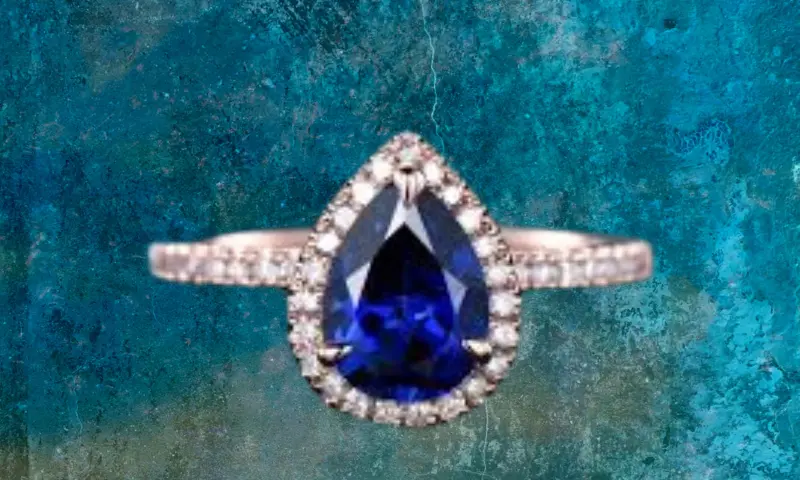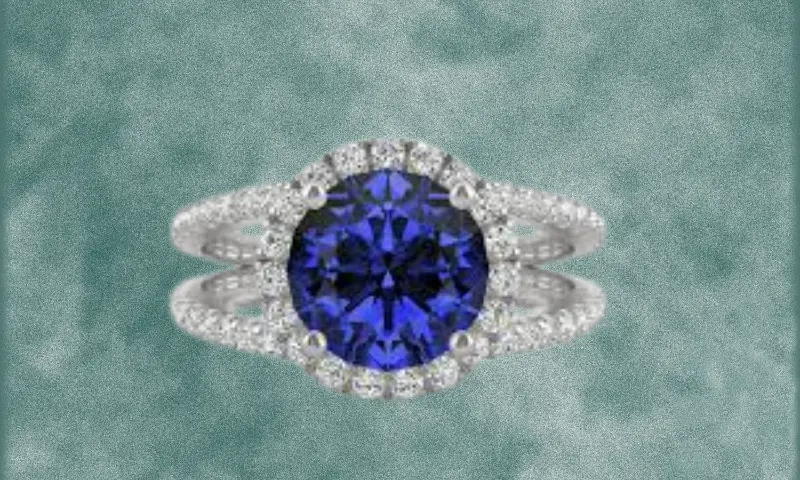
Lab Sapphire Ring for Women’s
Lab sapphire ring created in a lab be as enchanting as one pulled from the earth? As the demand for ethical and sustainable jewelry grows, lab sapphires are emerging as a remarkable choice, combining dazzling beauty with responsible practices. Crafted with precision and care, these gemstones often surpass their natural counterparts in clarity and color, all while offering greater affordability.
Beyond their captivating appearance, lab sapphires represent a shift towards more conscious luxury. By choosing these gems, you not only embrace stunning design but also support an approach to jewelry that prioritizes both environmental and ethical considerations. With their increasing popularity, lab sapphire rings are redefining the standards of elegance in the modern age.
What is a lab sapphire ring?
A lab sapphire ring features a sapphire gemstone that has been created in a laboratory rather than mined from the earth. Lab sapphires are engineered using advanced technology to replicate the natural processes that form sapphires, resulting in stones with identical physical and chemical properties to their natural counterparts.
These gemstones are cultivated under controlled conditions, which allows for a high degree of purity and color consistency. The process can also produce sapphires in a wider range of colors and sizes compared to what is typically found in nature. Lab sapphire rings offer an ethical and often more affordable alternative to traditional sapphire jewelry, combining elegance with a commitment to sustainability.

The advantages of selecting a lab-manufactured sapphire ring
- Ethical Sourcing: Lab sapphires are created in controlled environments, eliminating concerns about unethical mining practices, labor exploitation, and environmental damage often associated with natural gemstone mining.
- Affordability: Lab-created sapphires are generally more cost-effective than natural sapphires of comparable size and quality. This allows you to enjoy a high-quality gemstone without breaking the bank.
- Consistency and Quality: Lab sapphires are produced with precision, resulting in gems with fewer inclusions and more consistent color. This means you can often find a stone that meets your exact preferences without compromising on quality.
- Customization: The lab environment allows for the creation of sapphires in a broader range of colors and sizes than typically found in nature. This flexibility makes it easier to find or design a ring that perfectly matches your vision.
- Environmental Impact: By choosing lab-created sapphires, you support a more sustainable approach to gemstone production. The process reduces the environmental footprint associated with traditional mining, making it a more eco-friendly option.
- Transparency: The origin of lab sapphires is clear and documented, giving you confidence in the ethical and environmental standards upheld during their creation.
Do You Know
Prince Harry birthday, Bear Grylls Net Worth, & Islam Makhachev Net Worth are also very interesting topics on our website.
How are lab sapphire rings produced?
Lab sapphire rings are produced through sophisticated methods that mimic the natural processes of sapphire formation. Here’s a brief overview of the main techniques used:
- Hydrothermal Method: This process simulates the high-pressure, high-temperature conditions found deep within the Earth where natural sapphires form. A seed crystal of sapphire is placed in a chamber with a nutrient-rich solution, usually containing aluminum and other elements. Over time, the sapphire crystals grow around the seed, resulting in high-quality sapphires. The process can take several weeks to months.
- Czochralski Process (Flux Method): In this method, a small seed crystal is dipped into a molten flux—a mixture of chemicals that dissolves the sapphire components. As the solution cools, sapphire crystals form around the seed. This technique allows for the growth of large, high-quality crystals and is commonly used for producing gemstones with fewer inclusions and better color consistency.
- Verneuil Process (Flame Fusion): This older technique involves melting aluminum oxide (the primary component of sapphire) with a flame and letting it cool to form sapphire crystals. While this method is less commonly used today due to the advancement of other techniques, it can still produce high-quality gems, though it often results in more inclusions compared to the hydrothermal and flux methods.

lab sapphire ring choice
- Determine Your Style and Setting: Ring Style, Decide on the style that best suits your taste or the recipient’s preferences. Options include solitaire, halo, three-stone, vintage, or modern designs. Each style can enhance the beauty of the lab sapphire in different ways. In Metal Choice, Consider the metal for the band and setting. Common options include white gold, yellow gold, rose gold, platinum, and silver. The metal should complement both the sapphire and your personal style. In Setting Type, The setting of the sapphire can affect its appearance. Popular settings include prong, bezel, and pave settings. Prong settings offer maximum visibility of the gemstone, while bezel settings provide a modern look and better protection for the stone.
- Understand Sapphire Characteristics Color: Lab sapphires come in various colors, including classic blue, pink, yellow, and even green. The most valued color is a deep, vivid blue, but the choice should match personal preference and style.In Clarity, Lab sapphires are known for their clarity due to controlled growth conditions. Look for a sapphire with minimal inclusions to ensure a clear, brilliant appearance. The cut of the sapphire affects its brilliance and overall look. Common cuts include round, oval, cushion, and emerald. Choose a cut that enhances the sapphire’s color and fits the ring’s design. Carat Weight, Sapphires are measured in carats, and larger stones generally cost more. Decide on the size that fits your budget and the ring’s design.
- Check Certification and Quality: Ensure the lab sapphire comes with a certification from a reputable gemological laboratory. This certification verifies the quality and authenticity of the sapphire.In Quality Assurance, Look for reputable jewelers who provide guarantees and return policies. This ensures that you can address any issues with the ring’s quality or craftsmanship.
- Consider Customization: If you have a specific design in mind, many jewelers offer custom design services. You can work with a jeweler to create a unique ring that fits your vision.Personal Touch, Adding personal touches, such as engravings or unique settings, can make the ring more meaningful.
- Set a Budget: Lab sapphire rings are often more affordable than natural sapphires of comparable size and quality. Determine your budget beforehand to narrow down your options and avoid overspending.
- Research and Compare: Compare different jewelers and their offerings. Look at their reviews, the variety of lab sapphires they offer, and their pricing.Don’t hesitate to ask jewelers about their sourcing practices, the specifics of their lab sapphires, and their return policies.
Conclusion
In conclusion, lab sapphire rings offer a compelling combination of beauty, ethics, and value. Through advanced manufacturing techniques like the hydrothermal method, Czochralski process, and Verneuil process, lab-created sapphires achieve the same stunning qualities as natural stones while minimizing environmental and ethical concerns. Their affordability and consistency make them an attractive choice for those seeking high-quality gemstones without the drawbacks associated with traditional mining. By opting for a lab sapphire ring, you not only embrace exquisite design but also support a more sustainable and responsible approach to luxury.






